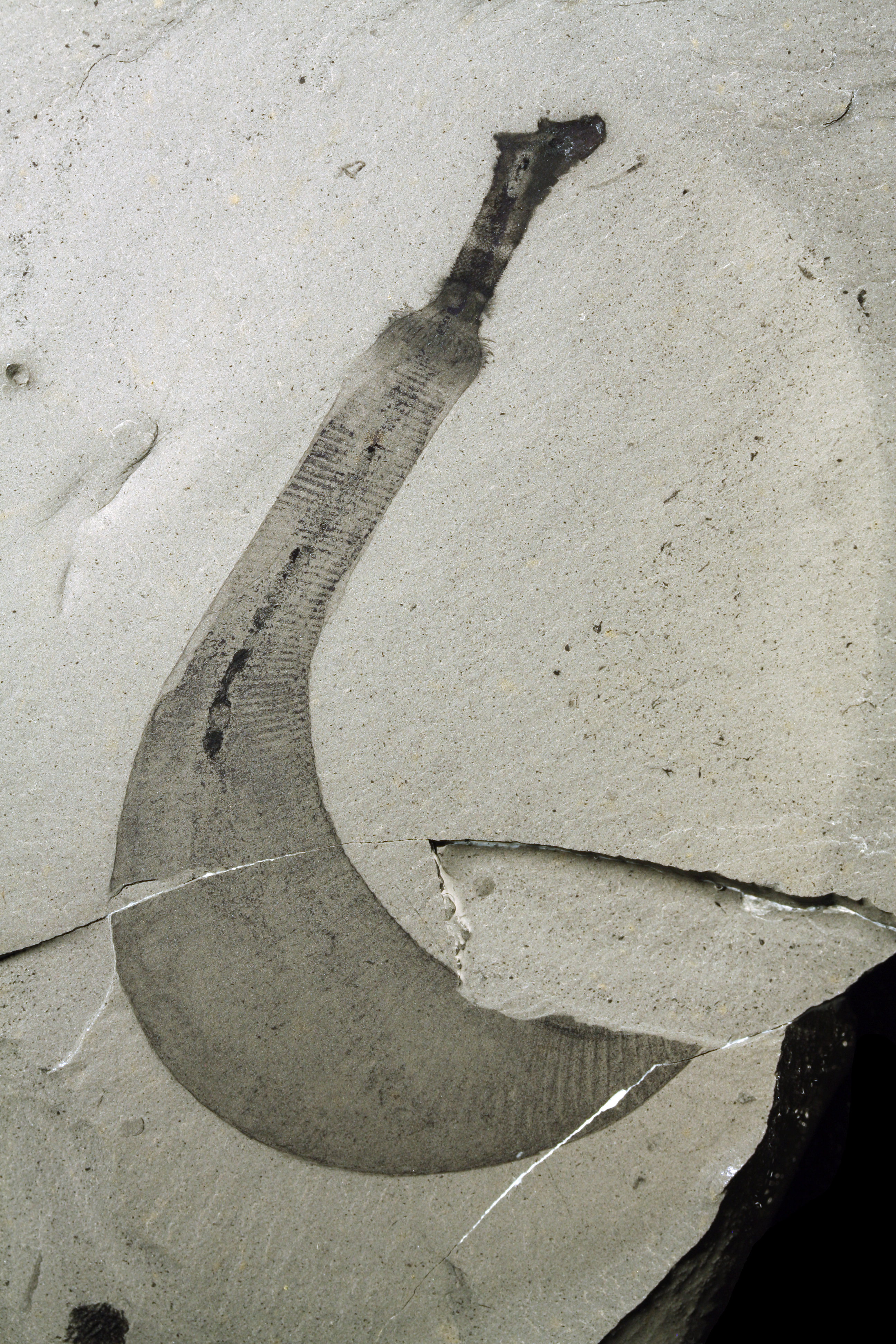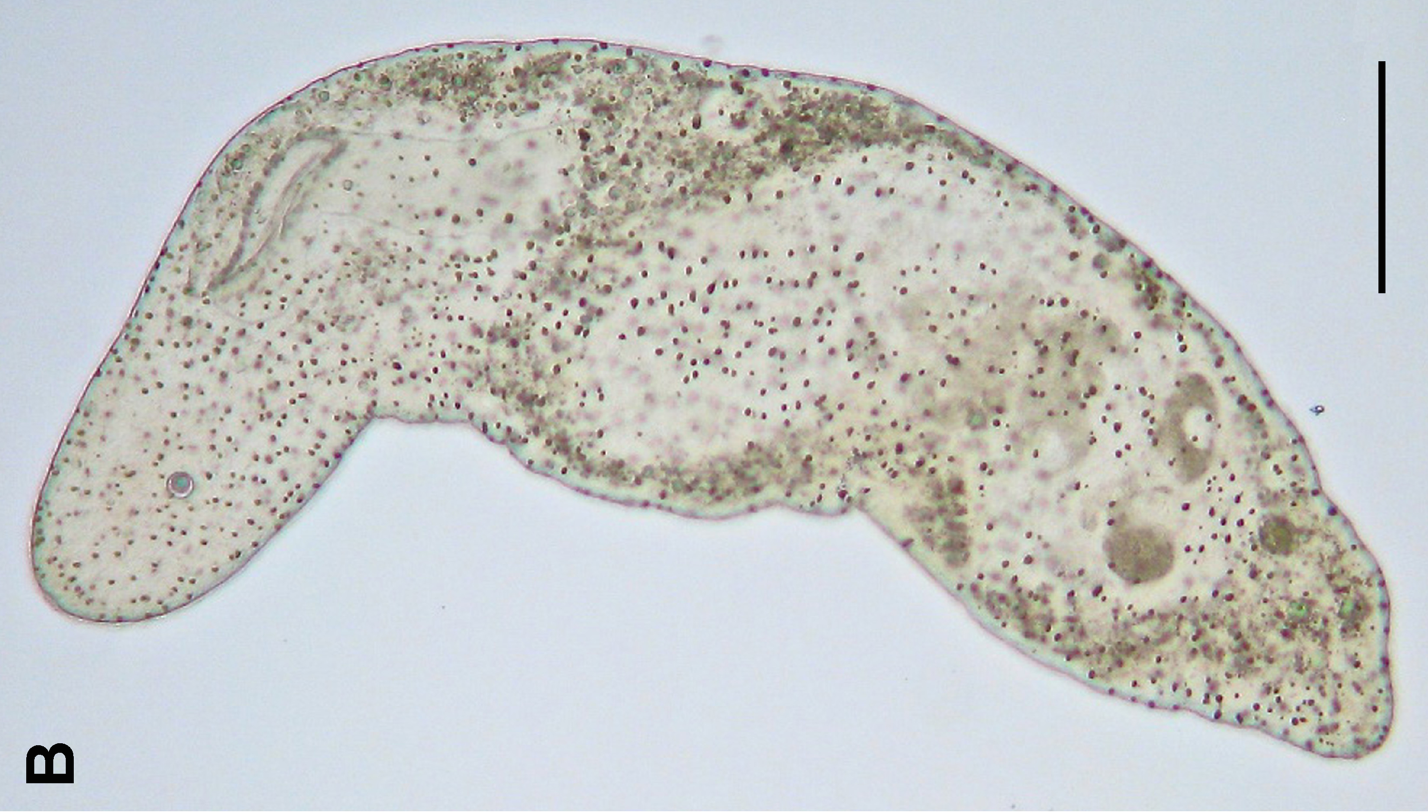|
Palaeoscolecid
The palaeoscolecids are a group of extinct ecdysozoan worms resembling armoured priapulids. They are known from the Lower Cambrian to the late Silurian; they are mainly found as disarticulated sclerites, but are also preserved in many of the Cambrian lagerstätten. They take their name from the typifying genus '' Palaeoscolex''. Other genera include '' Cricocosmia'' from the Lower Cambrian Chengjiang biota. Morphology Palaeoscolecids bear an annulated trunk ornamented with circular patterns of phosphatic tesselating plates; a layered cuticle; and an armoured proboscis. They are long and narrow, and can reach tens of centimetres in length. Their cuticle is annulated, typically in complete rings, but sometimes the rings split or only encircle part of the trunk. Each annulus is essentially identical to its neighbours; the only trunk differentiation is at the anterior and posterior. The anterior is radially symmetrical, typically comprising an introvert, whereas the trunk is bil ... [...More Info...] [...Related Items...] OR: [Wikipedia] [Google] [Baidu] |
Archaeopriapulida
Archaeopriapulida is a group of priapulid-like worms known from Cambrian lagerstätte. The group is closely related to, and very similar to, the modern Priapulids. It is unclear whether it is mono- or polyphyletic. Despite a remarkable morphological similarity to their modern cousins, they fall outside of the priapulid crown group, which is not unambiguously represented in the fossil record until the Carboniferous. They are probably closely related or paraphyletic to the palaeoscolecids; the relationship between these basal worms is somewhat unresolved. Species * Genus '' Acosmia maotiania'' Chen & Zhoi 1997 (Chengjiang deposits) ** '' Acosmia maotiania'' Chen & Zhoi 1997 * Genus ''Archotuba'' Hou et al. 1999 (possibly a Cnidarian) (Chengjiang deposits) ** '' Archotuba conoidalis'' Hou et al. 1999 * Genus '' Baltiscalida'' Slater et al. 2017 ** '' Baltiscalida njorda'' Slater et al. 2017 * Genus '' Eopriapulites'' Liu & al 2014 ** ''Eopriapulites sphinx'' Liu & al 2014 * Genus ... [...More Info...] [...Related Items...] OR: [Wikipedia] [Google] [Baidu] |
Priapulid
Priapulida (priapulid worms, from Gr. πριάπος, ''priāpos'' 'Priapus' + Lat. ''-ul-'', diminutive), sometimes referred to as penis worms, is a phylum of unsegmented marine worms. The name of the phylum relates to the Greek god of fertility, because their general shape and their extensible spiny introvert (eversible) proboscis may resemble the shape of a human penis. They live in the mud and in comparatively shallow waters up to deep. Some species show a remarkable tolerance for hydrogen sulfide and anoxia. They can be quite abundant in some areas. In an Alaskan bay as many as 85 adult individuals of ''Priapulus caudatus'' per square meter has been recorded, while the density of its larvae can be as high as 58,000 per square meter. Together with Echiura and Sipuncula, they were once placed in the taxon Gephyrea, but consistent morphological and molecular evidence supports their belonging to Ecdysozoa, which also includes arthropods and nematodes. Fossil findings show th ... [...More Info...] [...Related Items...] OR: [Wikipedia] [Google] [Baidu] |
Ecdysozoa
Ecdysozoa () is a group of protostome animals, including Arthropoda (insects, chelicerata, crustaceans, and myriapods), Nematoda, and several smaller phyla. They were first defined by Aguinaldo ''et al.'' in 1997, based mainly on phylogenetic trees constructed using 18S ribosomal RNA genes. A large study in 2008 by Dunn ''et al.'' strongly supported the Ecdysozoa as a clade, that is, a group consisting of a common ancestor and all its descendants. The group is also supported by morphological characters, and includes all animals that grow by ecdysis, moulting their cuticle. The group was initially contested by a significant minority of biologists. Some argued for groupings based on more traditional taxonomic techniques, while others contested the interpretation of the molecular data. Etymology The name ''Ecdysozoa'' stems etymologically . Characteristics The most notable characteristic shared by ecdysozoans is a three-layered cuticle (four in Tardigrada) composed ... [...More Info...] [...Related Items...] OR: [Wikipedia] [Google] [Baidu] |
Maotianshania
''Maotianshania cylindrica'' is an extinct worm-like creature of average size (up to long and wide). It occurs in the Lower Cambrian (Atdabanian) Chengjiang biota of Northeastern Yunnan, China. It is usually preserved as pink impression. The gut is a dark central zone. The anterior pharnyx and "collar", carry tiny sepia-colored teeth. The very back-end of the body has two small hooks. Etymology ''Maotianshania'' has been named for the Maotianshan shales, home to the famous Chengjiang Lagerstätte. Description The body of ''Maotianshania'' is worm-like, up to 4 cm in length and 2 mm wide, having 3-4 rings (or annuli) per mm. Like its relatives '' Cricocosmia'' and '' Palaeoscolex'', it is usually preserved as a very thin pink impression on the buff-colored matrix that is characteristic for the Maotianshan shales. The front of the body consists of a presumably protrusive and retractable elongate pharynx, armed with tooth- or spine-like outgrowths, arranged in rows ... [...More Info...] [...Related Items...] OR: [Wikipedia] [Google] [Baidu] |
Ecdysozoa
Ecdysozoa () is a group of protostome animals, including Arthropoda (insects, chelicerata, crustaceans, and myriapods), Nematoda, and several smaller phyla. They were first defined by Aguinaldo ''et al.'' in 1997, based mainly on phylogenetic trees constructed using 18S ribosomal RNA genes. A large study in 2008 by Dunn ''et al.'' strongly supported the Ecdysozoa as a clade, that is, a group consisting of a common ancestor and all its descendants. The group is also supported by morphological characters, and includes all animals that grow by ecdysis, moulting their cuticle. The group was initially contested by a significant minority of biologists. Some argued for groupings based on more traditional taxonomic techniques, while others contested the interpretation of the molecular data. Etymology The name ''Ecdysozoa'' stems etymologically . Characteristics The most notable characteristic shared by ecdysozoans is a three-layered cuticle (four in Tardigrada) composed ... [...More Info...] [...Related Items...] OR: [Wikipedia] [Google] [Baidu] |
Palaeoscolex
''Palaeoscolex'' is the type genus of the Palaeoscolecid worms, and served as a wastebasket taxon. until its taxonomy was revised and many of its taxa assigned to '' Wronascolex''. The type Type may refer to: Science and technology Computing * Typing, producing text via a keyboard, typewriter, etc. * Data type, collection of values used for computations. * File type * TYPE (DOS command), a command to display contents of a file. * Ty ... and only unequivocal species is ''P. piscatorum'', known from mid-trunk segments.Conway Morris S. 1997. The cuticular structure of the 495-Myr-old type species of the fossil worm ~Palaeoscolex~, ~P. piscatorum~ (?Priapulida). Zool. J. Linn. Soc. 119:69–82. References Prehistoric protostome genera Paleoscolecids {{paleo-protostome-stub ... [...More Info...] [...Related Items...] OR: [Wikipedia] [Google] [Baidu] |
Cycloneuralia
Cycloneuralia is a clade of ecdysozoan animals including the Scalidophora (Kinorhynchans, Loriciferans, Priapulids) and the Nematoida ( nematodes, Nematomorphs). It may be paraphyletic, or may be a sister group to Panarthropoda. Or perhaps Panarthropoda is paraphyletic with respect to Cycloneuralia. The group has also been considered a single phylum, sometimes given the old name Nemathelminthes. The uniting character is the nervous system organization with a circumpharyngeal brain and somata–neuropil–somata pattern. The name derives from the position of the brain around the pharynx The pharynx (plural: pharynges) is the part of the throat behind the mouth and nasal cavity, and above the oesophagus and trachea (the tubes going down to the stomach and the lungs). It is found in vertebrates and invertebrates, though its .... References Ecdysozoa taxa Protostome unranked clades {{protostome-stub ... [...More Info...] [...Related Items...] OR: [Wikipedia] [Google] [Baidu] |
Sirius Passet
Sirius Passet is a Cambrian Lagerstätte in Peary Land, Greenland. The Sirius Passet Lagerstätte was named after the Sirius sledge patrol that operates in North Greenland. It comprises six places in Nansen Land, on the east shore of J.P. Koch Fjord in the far north of Greenland. It was discovered in 1984 by A. Higgins of the Geological Survey of Greenland. A preliminary account was published by Simon Conway Morris and others in 1987 and expeditions led by J. S. Peel and Conway Morris have returned to the site several times between 1989 and the present. A field collection of perhaps 10,000 fossil specimens has been amassed. It is a part of the Buen Formation. Age The fauna is inevitably compared to that of the Burgess Shale, although it is probably ten to fifteen million years older – vs. ) – and more closely contemporaneous with the fauna of the Maotianshan shales from Chengjiang, which are dated to . Preservation The preservation of the Sirius Passet is traditiona ... [...More Info...] [...Related Items...] OR: [Wikipedia] [Google] [Baidu] |
Chalazoscolecidae
''Chalazoscolex'' is a genus of palaeoscolecidian worm known from the Sirius Passet Sirius Passet is a Cambrian Lagerstätte in Peary Land, Greenland. The Sirius Passet Lagerstätte was named after the Sirius sledge patrol that operates in North Greenland. It comprises six places in Nansen Land, on the east shore of J.P. Koch F .... It had around 140 segments, each adorned with two rows of palaeoscolecid plates. Its body was organised into three transverse sections, the medial bearing three large sclerites acrosswise, the laterals bearing ridges. References Cambrian invertebrates Prehistoric protostome genera Fossil taxa described in 2010 Paleoscolecids {{cambrian-animal-stub ... [...More Info...] [...Related Items...] OR: [Wikipedia] [Google] [Baidu] |



